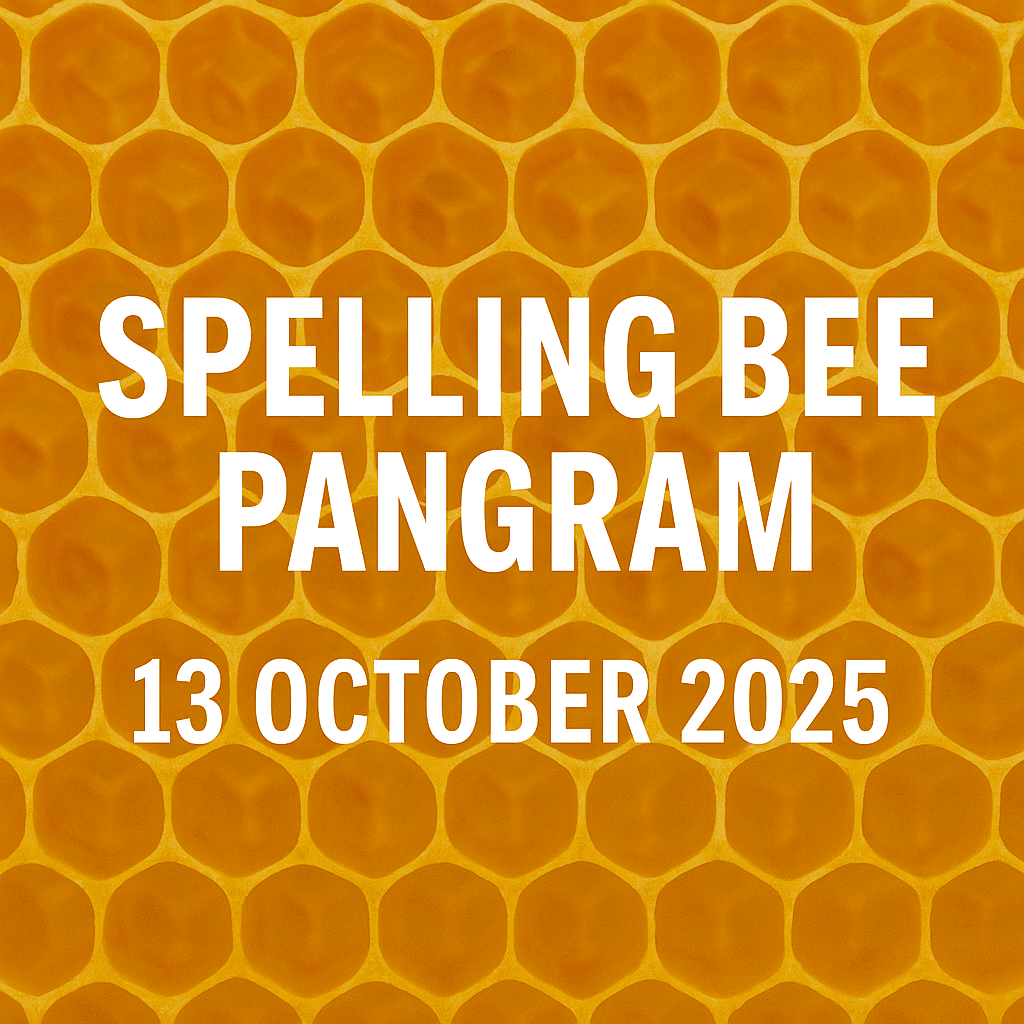Today’s Spelling Bee puzzle was the perfect mix of simplicity and subtlety. The center letter was T, surrounded by Y, M, C, I, O, and D. With two O’s and an M in the grid, I immediately sensed a satisfying pattern was hidden here. As it turned out, the pangram COMMODITY was both a linguistic and logical delight — a word that tied the puzzle together perfectly.
Step 1: Spotting the Easy Words
My first step is always to warm up with shorter words that fit the rules — using the central letter T at least once. Quickly, I noted:
-
MIST
-
OMIT
-
TIDY
-
CITY
-
DITTO
-
MOTTO
These smaller words help build rhythm and confidence. Seeing M, O, and T together reminded me of words like MOTTO, MOTION, and MOTIVE — though not all were allowed in this hive. Still, they hinted that the pangram might start with COM- or MOT- patterns.
Step 2: Building Toward the Pangram
Next, I looked for recurring letter pairs like MO, MI, and OM, since puzzles with multiple vowels often reward looping combinations. Words such as MOTTO, DITTO, and MIMIC started appearing, showing that repetition and symmetry were key themes today.
That pattern — repetition and doubling — made me think of words that involve abundance or trade, and that’s when COMMODITY began to form in my head.
Step 3: The Aha Moment
After a few near guesses like MODITY and COMMITY, I realized the correct blend was COMMODITY — a word that perfectly used every letter in the hive:
C, O, M, M, O, D, I, T, Y.
It fit beautifully and made sense as a pangram — an everyday term that feels elegant in its simplicity. The best pangrams are those that sound familiar yet are surprisingly hard to spot at first glance, and COMMODITY nailed that balance.

Here’s the full list of valid words I uncovered during my solve:
4-Letter Words
- OMIT
- MIST
- TIDY
- TODY
- MITY
- MOTY
- CITY
- COOT
- ITTY
- MITT
- MOOT
- TOOT
5-Letter Words
- DITTY
- MOTTO
- DOMIT
- MIMIC
- DITTO
- DOTTY
- IDIOT
- TIMID
- TODDY
6-Letter Words
- TOMMIX
- DOMITY
- COMITY
- COMMIT
- ODDITY
- TOMTIT
7+letter words
- COMMODITY (Pangram)
- IDIOTIC
- TIMIDITY
What I Learned from Today’s Hive
-
Double letters are clues, not confusion.
When a grid repeats letters like “M” or “O,” it often leads to compound or plural-like pangrams.
-
Think economically.
The presence of trade-related roots (com- for common, mod- for measure) can hint toward business or logical terms.
-
Stay flexible.
I almost dismissed COMMODITY thinking it was too simple — and yet, that was exactly what made it brilliant.

Reflection
Today’s hive captured what makes the Spelling Bee so addictive — it rewards pattern recognition and intuition in equal measure. The moment I typed out COMMODITY, the whole grid made sense. It’s a word that represents value and exchange, much like the puzzle itself — a trade between patience and satisfaction.
Every smaller word, from DITTO to MOTTO, carried a rhythm of repetition, mirroring the double letters in COMMODITY. There’s a nice poetic symmetry to that.
Did You Spot the Pangram?
The NYT Spelling Bee for October 13, 2025, was both clever and rewarding. The pangram COMMODITY tied the puzzle together with meaning and precision — a reminder that even in a game of letters, the simplest words often hold the greatest value.
If today’s puzzle taught me anything, it’s that wordplay, like trade, depends on balance — and COMMODITY was today’s perfect equilibrium.






